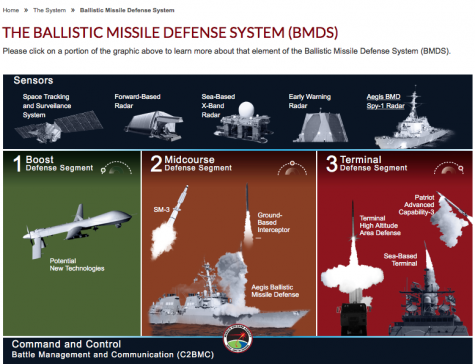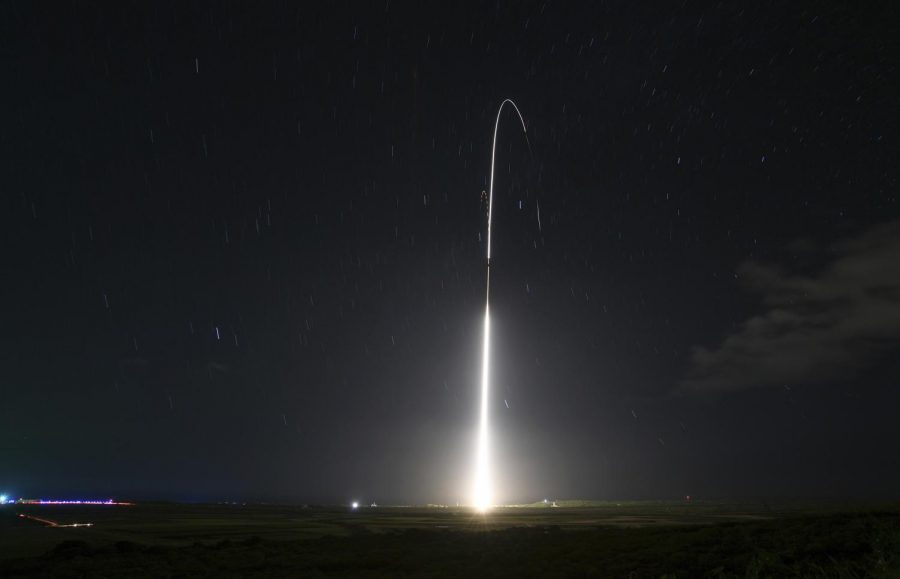Rights Reserved-Hillsboro Globe, member Associated Press AP File Photo
FILE – This Dec. 10, 2018, file photo, provided by the U.S. Missile Defense Agency (MDA),shows the launch of the U.S. military’s land-based Aegis missile defense testing system, that later intercepted an intermediate range ballistic missile, from the Pacific Missile Range Facility on the island of Kauai in Hawaii. The Trump administration will roll out a new strategy Thursday, Jan. 17, 2019, for a more aggressive space-based missile defense system to protect against existing threats from North Korea and Iran and counter advanced weapon systems being developed by Russia and China. (Mark Wright/Missile Defense Agency via AP)
President Trump announces a more aggressive Missile Strategy as part of Space Force
WASHINGTON — Thursday the Trump administration will roll out a new strategy space program based a missile defense system.
The intent is to protect the United States against existing threats from North Korea and Iran and counter advanced weapon systems being developed by Russia and China.
The new review concludes that in order to adequately protect America, the Pentagon must expand defense technologies in space and use those systems to more quickly detect, track and ultimately defeat incoming missiles.
Associated Press reports that details about the administration’s Missile Defense Review — the first compiled since 2010 — are expected to be released during President Donald Trump’s visit to the Pentagon with top members of his administration.
“The Missile Defense Agency is the U.S. monitoring agency over BMDS. The Missile Defense Agency’s (MDA) mission is to develop, test, and field an integrated, layered, ballistic missile defense system (BMDS) to defend the United States, its deployed forces, allies, and friends against all ranges of enemy ballistic missiles in all phases of flight. (MDA.mil.gov)
Recognizing the potential concerns surrounding any perceived weaponization of space, the strategy pushes for studies.
No testing is mandated, and no final decisions have been made.
Specifically, the U.S. is looking at putting a layer of sensors in space to more quickly detect enemy missiles when they are launched, according to a senior administration official, who briefed reporters Wednesday.
The U.S. sees space as a critical area for advanced, next-generation capabilities to stay ahead of the threats, said the official, who spoke on condition of anonymity to disclose details of the review before it was released.
The administration also plans to study the idea of basing interceptors in space, so the U.S. can strike incoming enemy missiles during the first minutes of flight when the booster engines are still burning.

Missile Defense file photo
Congress, which ordered this review, already has directed the Pentagon to push harder on this “boost-phase” approach, but officials want to study the feasibility of the idea and explore ways it could be done.
“Developments in hypersonic propulsion will revolutionize warfare by providing the ability to strike targets more quickly, at greater distances, and with greater firepower,” Lt. Gen. Robert Ashley, director of the Defense Intelligence Agency, told Congress last year. “China is also developing increasingly sophisticated ballistic missile warheads and hypersonic glide vehicles in an attempt to counter ballistic missile defense systems.”
Current U.S. missile defense weapons are based on land and aboard ships. Trump and Vice President Mike Pence have both emphasized space-based capabilities as the next step of missile defense.
The release of the strategy was postponed last year for unexplained reasons, though it came as Trump was trying to persuade North Korea to give up its nuclear weapons.
